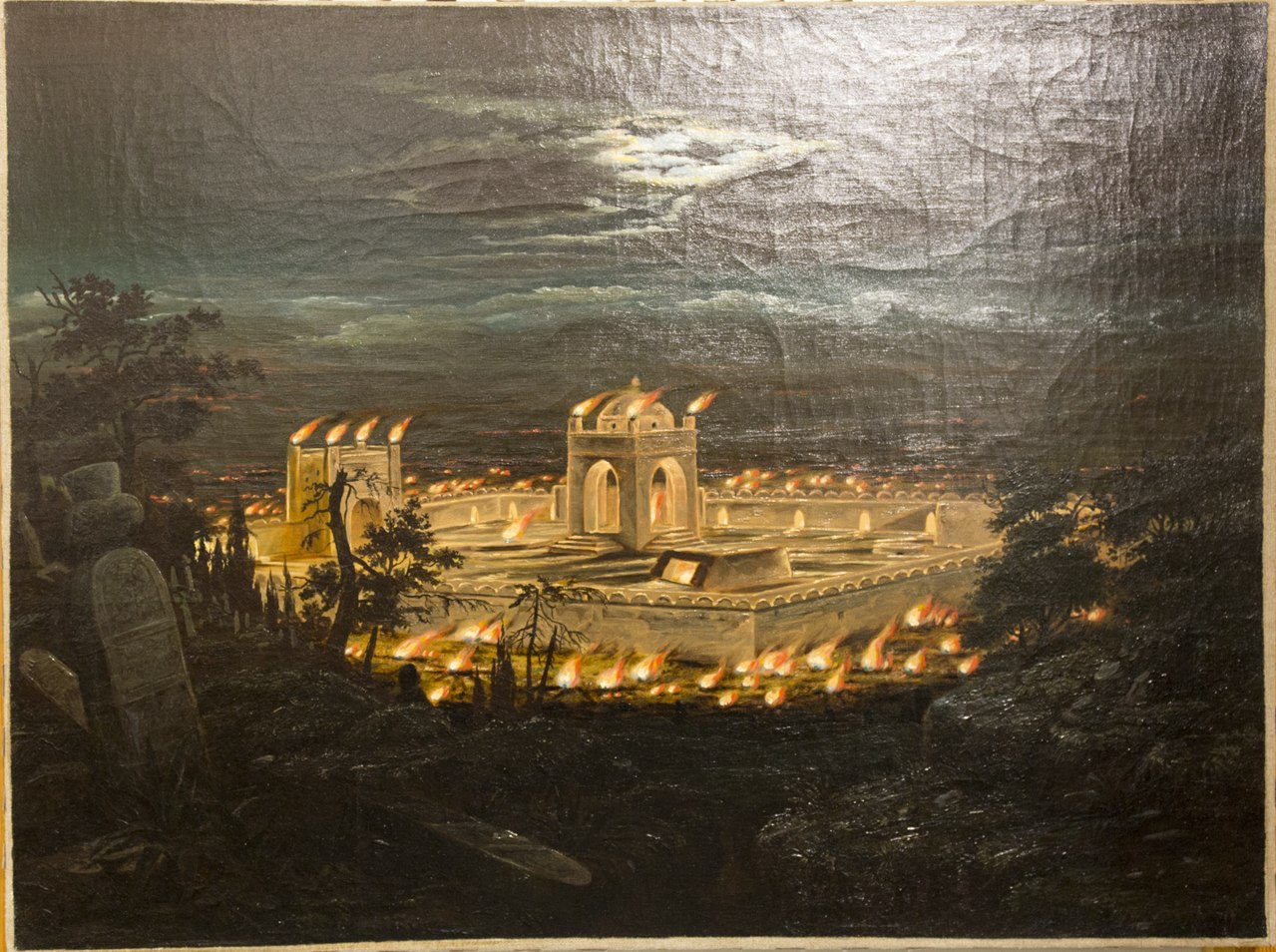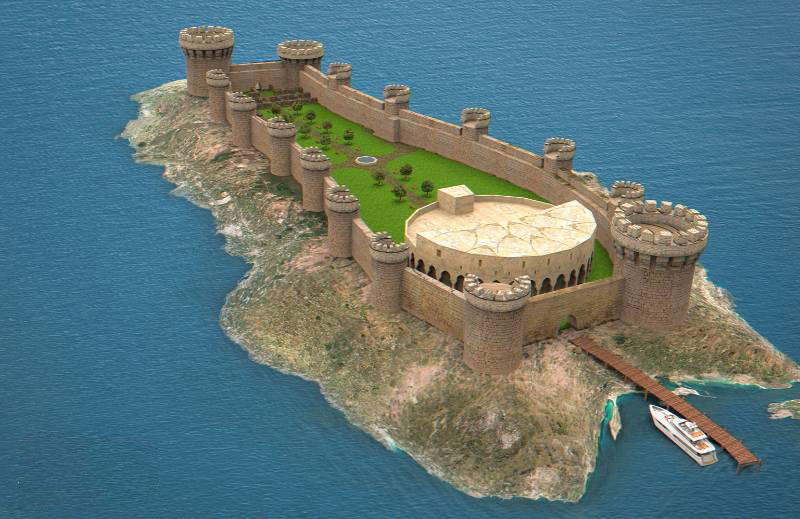Ancient period

Archaeological find in Shirvanshahs’ Palace
Baku is ancient Eastern city, rich in architectural monuments.
The artefacts of cultural material belonging to III-I millennium BC were discovered as a result of archaeological excavations in Absheron, Mardakan, Shuvalan, Turkan, Bilgah, Nardaran, Shagan, Binagadi and other places. In Baku, Icherisheher the thickness of the cultural layer reaches 5-6 m. The remains of many industrial buildings, warehouses, public-religious and residential buildings, complex engineering facility that supplies the city with water (XII-XVI centuries), specialized sewerage, water pipe, ovdan (underground water supply construction) and so on was found here.
There is a tombstone dating to the IX century in the list of the discovered buildings. Archaeological materials proves that the city was built according to a special plan. Handicraft (pottery, metalworking, jewelry, etc.) played an important role in the economic life of Baku. Various shaped and assorted ceramic dishes decorated with geometric, animal and other paintings obtained during excavations are examples of high art. Remnants of residential buildings, oven, wells and other objects give opportunity to get information about daily life of residents.
Porcelain dishes found in the archeological excavations (XII-XV centuries), Bukhara (XIV century) and Multani (XV-XVI centuries) caravanserais near the Maiden Tower, historical and architectural monuments of Baku, and others prove the trade relations with the Eastern countries. In the XVI-XVII centuries copper coins were cut in Baku and carpet weaving was developed here. The historical monuments dating to XVII-XVIII centuries indicate the development of architecture and engraving and others.
The first architectural monuments in Baku were temples and ateshgedes (religious place for fire-worshippers).

Ateshgah is located on a flat area not far from the sea, to the south-east of the village of Surakhani on the Absheron Peninsula; it is currently surrounded by oil fields on all sides. The first buildings of Ateshgah temple are dated to the II-III centuries. At that time Zoroastrianism was the main religion in Azerbaijan and Zoroastrian temples were reconstructed in the regions.

The fire temples went into decline in the country in VII century, after acceptance of Islam. The fire-worshippers were pursued and the temples were destroyed.
It is believed that, the ancient Fire Temple, situated in the place of nowadays Ateshgah, was ruined during the Arab invasion.
The temple of Ateshgah, in the sixteenth and seventeenth centuries, entered its second life. During that period the famous Silk Road passed through Azerbaijan. Fire-worshippers, from different countries, especially from India came there to worship the relic. Merchants from various countries also visited Ateshgah as a holy place. They stayed there for 2-3 days and administered aid to fire-worshippers and Zoroastrians.
There are many inscriptions on the walls of the temple. One of the inscriptions is in Farsi, but others in Hindu. Each inscription includes information about the date and names of merchants who built the rooms, also the names of Indian gods. Cells have been used as living places, chapels and caravanserais. Some of the pre-era items were found in these cells.
Although Ateshgah operates as a museum since 1972, it has become a branch of the State Historical-Architectural Reserve (“Shirvanshahs’ Palace Complex”) after restoration in 1975.
The temple was declared a state historical-architectural reserve by decree of the President of Azerbaijan dated December 19, 2007. Ateshgah fire temple was inscribed on the UNESCO World Heritage Tentative List in Need of Urgent Safeguarding on September 30, 1998 and was granted “enhanced protection” status.
In the VI century, the Maiden Tower was built in Baku (the inscription “the Tower of Mesud Davudoglu”was put to nowadays place during the reconstrcution) and the city was surrounded by the walls. During the Arab invasion, the ateshgedes were destroyed. The developmet of Baku started from the so-called “Icherisheher”, and the first buildings were built on the seafront, near the present Maiden Tower. From the X-XI centuries the reconstruction works were carried out in the seafront. The archeological monument of that time is Siniggala minaret (1078, architect Mehemmed Ebubekroglu). Thus, the Maiden Tower and its surroundings were formed as inner-fortress.
The city has undergone great progress when the capital of Shirvan was transferred from Shamakhi to Baku as a result of the destructive earthquake in the XII century.
The construction of Shirvanshahs’ “Bayil castle” residence in the Baku port in XIII century was the most important event in the urban development. A complex of buildings surrounded by walls (1235, master Zeyneddin Eburashidoglu and probably, architect Abdulmejid Mesudoglu) with engravings and drawings on the stone is a rear architectural ensemble.
Some new constructions were built in Baku in XIV century. Main of them are Juma Mosque which has only a minaret and the rectangular tower where the building of the Azerbaijan National Academy of Science (ANAS) Presidium united with the city walls.
Reference used:
Azerbaijan National Encyclopedia. The third volume. Baku, 2011, p. 62-63.
